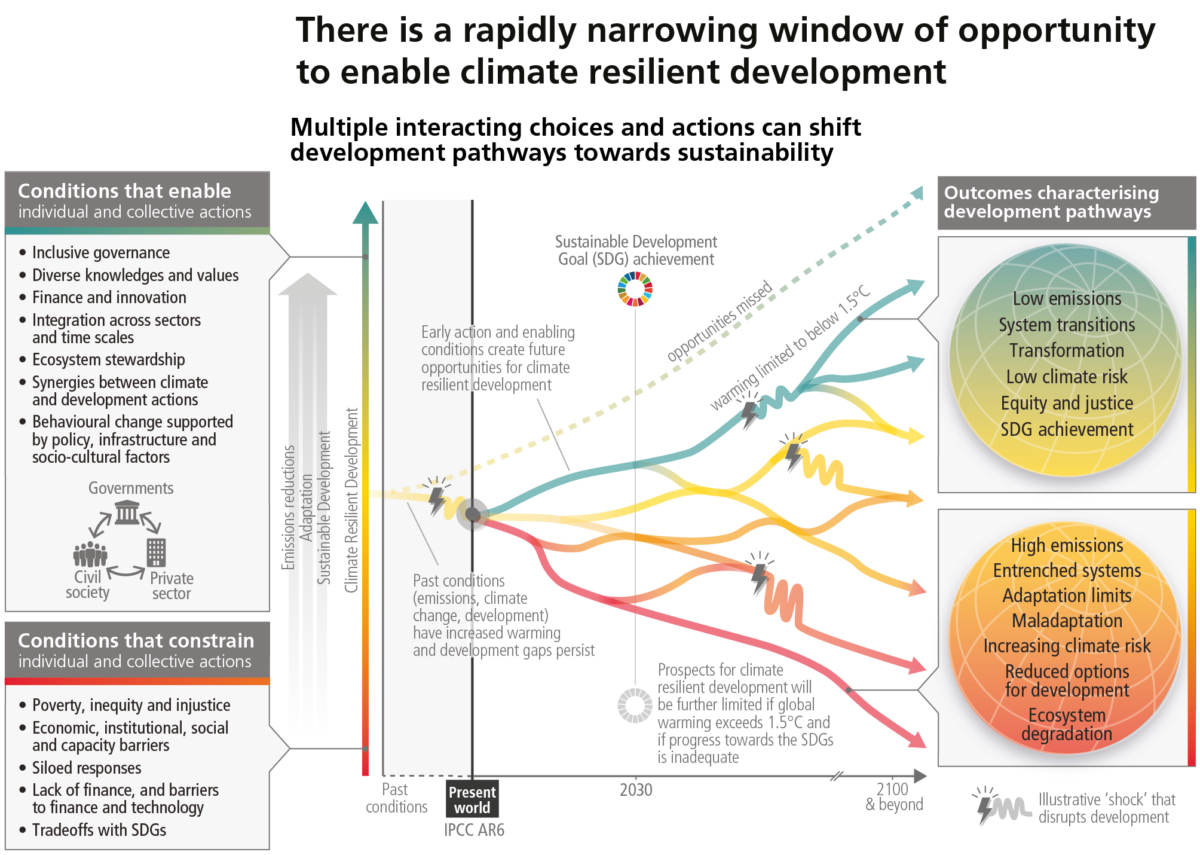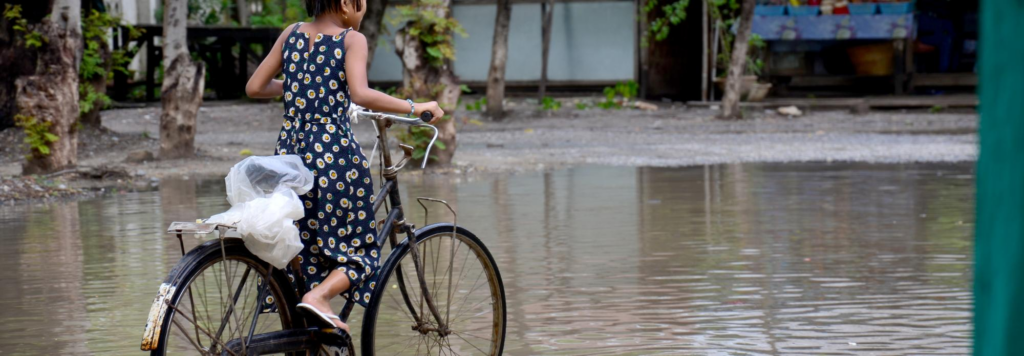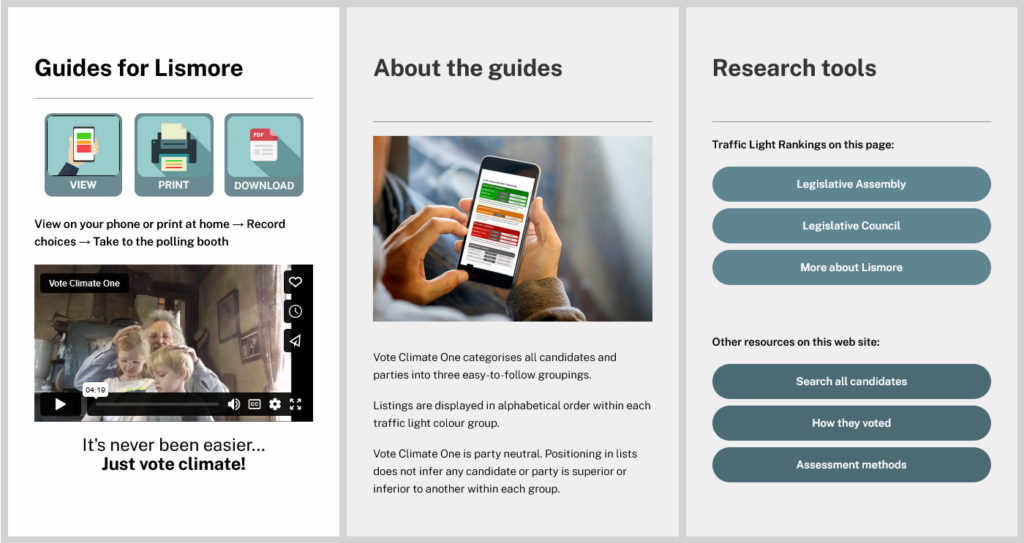Politics vs physical dangers and real death

IPCC warns we have only a few years left when climate action can reverse human caused global warming to avoid a crescendo of climate catastrophes
Unfortunately, we are living in a world where the greedy self-interests of billionaires and multi-national corporations tend to control media and politics. These special interests are threatened by things that must be done to slow and stop global warming. They use their power over the media and politicians to deny the need for and to prevent critically important climate action. However, the real-world understanding reported in the concluding summary of the IPCC’s 6th Assessment Report on Climate Change (published this week) documents and explains the very real dangers and even mass deaths society faces if global warming is not stopped by 2030. We genuinely face a climate emergency that threatens human survival. To have any hope of organizing and implementing the kinds of statewide and national actions needed to stop the warming process citizens have to replace the parliamentary puppets of special interests with MPs who will genuinely work for the citizens who elected them. In New South Wales, how you vote this week is a life-and-death matter!
The IPCC is the Intergovernmental Panel on Climate Change formed by the World Meterological Organization and the United Nations in 1988 to study and advise world governments on climate change. The IPCC’s Summary for Policy Makers published this week was unanimously agreed to and signed off by the politically appointed representatives of all 195(!) member governments of the United Nations that form the World Meteorological Organization (normally only 170-180 governments participate in IPCC reviews). This unusual approval process required for IPCCs “summary reports” is intended to ensure that governments accept its findings as authoritative advice on which to base their actions (a 1:30 minute IPCC video explains).
I have explained that this approval process is highly conservative and cannot avoid downplaying the extent and dangers of climate change. In reality, the actual dangers to humanity are likely to be a lot worse than described by the IPCC. New South Wales residents who are currently voting on their state government (polls close on 25 March) should note that all the modeling and predictions discussed in the Report are based on weather and climate data collected only up to 2020. The models and predictions do not include evidence on or predict how extreme climate events have actually been: e.g.,Black Summer bushfires, more than two years of unprecedented and widespread flooding, extreme heatwaves and drought, etc. If you are living on the land or close to Nature, you will know that the reality you are living with is already significantly worse than anticipated by the IPCC.
At nearly 8,000 pages, the full report is virtually unreadable. Every statement is documented, justified, and qualified. Fortunately, the World Resources Institute has done an admirable job of highlighting critical content in a readable way:

by Sophie Boehm and Clea Schumer, 20/03/2024 in World Resources Institute – Insights
10 Big Findings from the 2023 IPCC Report on Climate Change
Today marks the release of the final installment of the Intergovernmental Panel on Climate Change’s (IPCC) Sixth Assessment Report (AR6), an eight-year long undertaking from the world’s most authoritative scientific body on climate change. Drawing on the findings of 234 scientists on the physical science of climate change, 270 scientists on impacts, adaptation and vulnerability to climate change, and 278 scientists on climate change mitigation, this IPCC synthesis report provides the most comprehensive, best available scientific assessment of climate change.
It also makes for grim reading. Across nearly 8,000 pages, the AR6 details the devastating consequences of rising greenhouse gas (GHG) emissions around the world — the destruction of homes, the loss of livelihoods and the fragmentation of communities, for example — as well as the increasingly dangerous and irreversible risks should we fail to change course.
But the IPCC also offers hope, highlighting pathways to avoid these intensifying risks. It identifies readily available, and in some cases, highly cost-effective actions that can be undertaken now to reduce GHG emissions, scale up carbon removal and build resilience. While the window to address the climate crisis is rapidly closing, the IPCC affirms that we can still secure a safe, livable future.
…
Looking Ahead
The IPCC’s AR6 makes clear that risks of inaction on climate are immense and the way ahead requires change at a scale not seen before. However, this report also serves as a reminder that we have never had more information about the gravity of the climate emergency and its cascading impacts — or about what needs to be done to reduce intensifying risks.
Limiting global temperature rise to 1.5 degrees C (2.7 degrees F) is still possible, but only if we act immediately. As the IPCC makes clear, the world needs to peak GHG emissions before 2025 at the very latest, nearly halve GHG emissions by 2030 and reach net-zero CO2 emissions around mid-century, while also ensuring a just and equitable transition. We’ll also need an all-hands-on-deck approach to guarantee that communities experiencing increasingly harmful impacts of the climate crisis have the resources they need to adapt to this new world. Governments, the private sector, civil society and individuals must all step up to keep the future we desire in sight. A narrow window of opportunity is still open, but there’s not one second to waste. [my emphasis]
Read the complete article….
Think about what this means!
As reported extensively in all Australian media today (21 May) the agreed IPCC summary says that near-term (i.e., ASAP!) climate action is urgent because the window is closing for us to secure a livable and sustainable future, and that: “The choices and actions implemented in this decade will have impacts now and for thousands of years”. These and many other critically important points are clearly summarized in the Headline Statements, which are the overarching conclusions of the approved Summary for Policymakers. Taken together these provide a concise narrative as to why effective action on the climate emergency is so urgent.
If you care for your future and the future of your family and society, you need to take the IPCC’s cautions and warnings seriously. And consider what this means in a world where your political representatives are likely to be more concerned to satisfy the wants of their big donors and special interests rather than you or other citizens of their electorates. These big donors are developers, fossil fuel industries, miners, etc., who are more concerned about immediate profit rather than future survival.
Think: if you are a “rusted-on” voter who can be counted on to vote for the incumbent or party you have always voted for, especially in a ‘safe’ seat, your ‘representative’ has no reason to consider your future in any way, and can work full time for the special interests.
However, in Australia, we still live in a democracy where your considered vote can actually work to throw the bastards out, by electing someone you can reasonably trust to work for the community of those who vote rather than those who pay…. Given the nature and reality of the climate emergency, you should consider Vote Climate One’s motto:
We need to treat the climate emergency as a global war we are on track to lose unless we can focus our efforts on the only task that matters — reversing global warming. If we fail here no other tasks matter — our species will soon end up extinct no matter how we arrange the deck chairs on the burning ship.
How Vote Climate One can help
Science and politics
If you need more evidence that we need to change our governments, there is plenty on our Climate Sentinel News blog covering both science and politics.
How to vote
We don’t tell you how to vote. We work to help you achieve the results you want when you vote.
In Australia, Vote Climate One works to assess and rank how we think every party and independent candidate on the ballot in Federal and all State elections will respond to the climate crisis. Thanks to modern computer technology this is actually do-able. How we rank candidates is explained in our Climate Lens Traffic Light Assessment process. Sometimes, we’ll even get on the phone to find out more. The undeniable task of the climate lens is to prioritise the protection of everything we hold dear. The hubris of our species needs a dose of the reduction perspective tranquilizer encapsulated in this painting by Peter Trusler.

Our conclusions are presented via downloadable and printer-friendly voting guides for each and every electorate in NSW. You can find the guide for your electorate here (in this case, Lismore). The electorate screen tells you how we can help. Parties and candidates we think will work for climate action are designated with green lights. Those who we think won’t or who haven’t given us much to go on, are designated with red lights, Those we think are better than the worst, but not fully trustworthy are designated orange.

If you are concerned to see action on climate change, number all the green-light independents and parties first. Thus, even if your number [1] selection doesn’t win, you still maximize the chances that someone else with good climate credentials will be elected. If you want detail to help you decide how to rank green-light candidates, the Research Tools provide links to candidate websites and other information about them.
As Rob and his grandchildren explain in the video, the printable voting guides make it easy for you to transfer your preferences to the ballot paper in the voting booth:
Remember, we are voting in hopes of leaving a happy future for our families and society.
About the featured image: Figure SPM.6 from Summary for Policymakers, AR6 Synthesis Report: Climate Change 2023
There is a rapidly narrowing window of opportunity to secure a liveable and sustainable future for all. There are a multitude of political choices that need to be made during this window. If we make good ones we can go on living in a world with a sustainable future. Bad choices will rapidly constrain our future to pathways that are likely to lead to societal collapse and eventual human extinction in a still rapidly warming world.
Figure caption: The illustrative development pathways (red to green) and associated outcomes (right panel) show that there is a rapidly narrowing window of opportunity to secure a liveable and sustainable future for all. Climate resilient development is the process of implementing greenhouse gas mitigation and adaptation measures to support sustainable development. Diverging pathways illustrate that interacting choices and actions made by diverse government, private sector and civil society actors can advance climate resilient development, shift pathways towards sustainability, and enable lower emissions and adaptation. Diverse knowledge and values include cultural values, Indigenous Knowledge, local knowledge, and scientific knowledge. Climatic and non-climatic events, such as droughts, floods or pandemics, pose more severe shocks to pathways with lower climate resilient development (red to yellow) than to pathways with higher climate resilient development (green). There are limits to adaptation and adaptive capacity for some human and natural systems at global warming of 1.5°C, and with every increment of warming, losses and damages will increase. The development pathways taken by countries at all stages of economic development impact GHG emissions and mitigation challenges and opportunities, which vary across countries and regions. Pathways and opportunities for action are shaped by previous actions (or inactions and opportunities missed; dashed pathway) and enabling and constraining conditions (left panel), and take place in the context of climate risks, adaptation limits and development gaps. The longer emissions reductions are delayed, the fewer effective adaptation options.